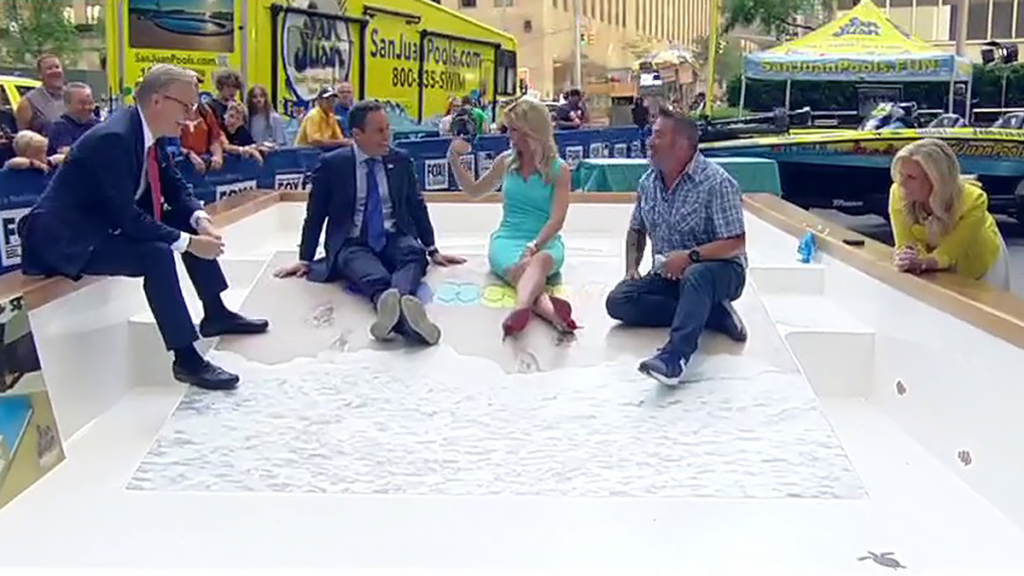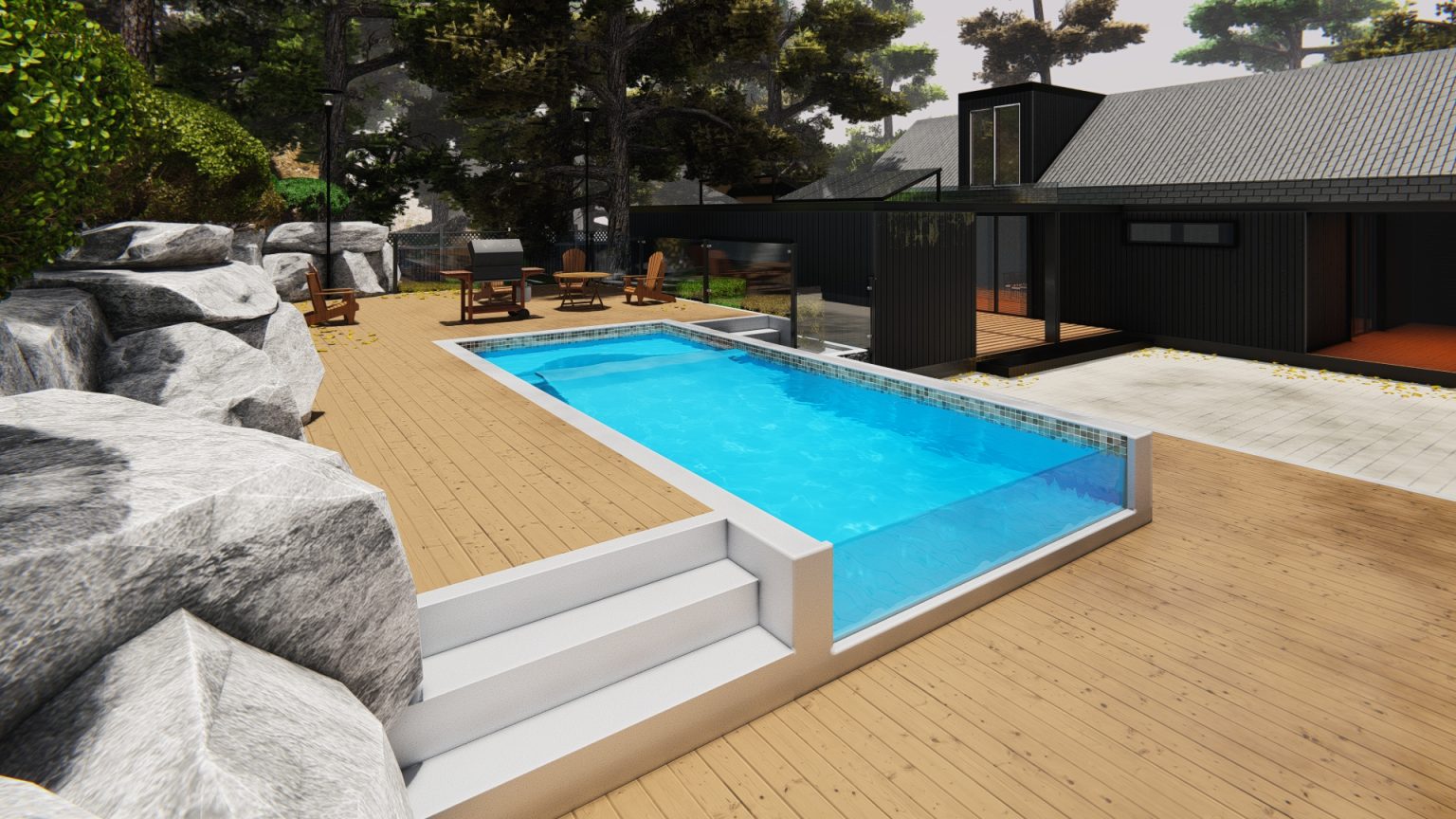Amid a wave of global inflation, collapsing stock markets, and the specter of war, you may be forgiven for worrying about how 3D printing will rise to this impossibly complex occasion. We’ve found the answer for you: why not 3D print all of the swimming pools? Fox and Friends reports that Lakeland, Florida-based San Juan Pools is 3D printing fiber glass swimming pools in days.
A family-owned business, San Juan invented the fiberglass pool, bringing them to market in 1958. Now, the firm is innovating and turning to a technology that reduces labors and speeds up time-to-market. By relying on Alpha Additive, another Florida firm that builds custom 3D printers and offerings additive manufacturing services, the company is able to 3D print swimming pools in a fraction of the time it would take to make them traditionally.
¨The age of instant gratification is truly here — just in time for summer,¨ reports Fox. Compared to traditionally made fiber glass pools, these 3D printed counterparts are “completely recyclable.” Home improvement host Skip Bedell stated, “So, when they’re done, they can put it through a plastic shredder and reuse those plastic pellets.”
San Juan’s Baja Beach model was shipped to Fox in Manhattan, where the show’s team actually sat in the model. Bedell explained that, normally, a wood mold that might take months to build would be required to form the final fiber glass product. Now, the process can be faster and more sustainable with 3D printing. Obviously, the time-to-market is shortened—the pool can be shipped on a flatbed truck it can be installed in one day.

The Baja Beach model itself looks like it may be a tad difficult to swim in, but it does feature a sloping beach entryway and an eight-person hot tub. One side is made of transparent glass, allowing swimmers to look out towards the view. The Baja Beach measures 7.92 m by 3.66 m, with a depth of 91 cm, giving it an area of seven square meters and a volume of over 8,000 liters. The pricing on San Juan’s pools ranges from around $17,000 to around $38,000. That’s quite a 3D print.
We know that large scale 3D printing technology such as that made by Cincinnati, Thermwood, Ingersoll, and CEAD is growing. We can find a lot of applications for 3D printing of large-scale carbon fiber and fiber glass-reinforced polymers. We also know that these large-scale 3D prints typically require such reinforcement to keep them from warping. So, we may be able to assume that the Baja Beach model is made from a 3D printed polymer reinforced with glass fiber. However, I believe that fiber glass is a horrible material and any replacement of it is an excellent development. So, perhaps replace fiber glass with a flax composite or something similar? Of that, we can’t be sure just yet.
The biggest applications for large scale 3D printing have been large aerospace tooling. Additionally, boat hulls and aircraft bodies are probably the biggest reason why Oak Ridge National Laboratory, in particular, and the U.S. government, more generally, are pushing large scale polymer manufacturing with 3D printing.
The fiberglass pool market is nearly the same as that of fiberglass boats. They’re both luxury products that are now made painstakingly by hand through via layup processes feature moles, a lot of workers, and nasty chemicals. Additionally, they contain near un-recyclable materials and fibers that are horrible for the environment. The industry could derive significant environmental benefits form 3D printing both hulls and pools. Additionally, a reduction in labor and up-front investment per pool are both advantages for pool manufacturing. Potentially, these pools could be customized, as well.
Will we revolutionize the pool industry? It would depend really on the material cost. If San Juan or another party can develop their own polymer and compound it for a lower cost than is now commonplace, then the economics may very well work out. It may be more financially advantageous because of the reduced outlay and fixed costs. The company would have to invest in some automation and run the printers hard, but AM could very well be a meaningful competitor for this market.
If so, it would be very interesting to see if 3D printing can make other large-scale objects for around $30,000. This would make some large, complex formwork, room dividers, tooling, and vehicle hulls much more affordable and enable many business cases in those markets. Michiel De Bruijcker, of Poly Products, already told us on the 3DPOD that his firm is 3D printing custom Jacuzzis for super yachts. So, there must be more entrepreneurial activity going on in this area as well.
Subscribe to Our Email Newsletter
Stay up-to-date on all the latest news from the 3D printing industry and receive information and offers from third party vendors.
You May Also Like
3D Printed Heat Spreader Could Improve Efficiency of Electronics
The low-hanging fruit for decarbonization has long been improving the efficiency of existing systems, hence the justification for LED lights and ENERGY STAR certified appliances. While such minor moves are...
3D Printing News Unpeeled: Marine Gearboxes, 3D Printed Motors and $1.7 Million in Seed Funding
UK based Equipmake just released their Ampere-220 e-axle system. The system, which is meant for high performance electric cars, was similar to one released on the Ariel HIPERCAR. It has...
CEAD Unveils 36-Meter-Long 3D Printer for Abu Dhabi’s Al Seer Marine
CEAD, a Dutch original equipment manufacturer dedicated to large-format 3D printers, has unveiled what it claims to be the world’s largest robotic arm-based 3D printer. At 36 meters long and...
3D Printed Biocomposites Could Help Reduce Marine Plastic Pollution
Concerns about the impact of plastic litter and microplastics in the oceans are at the forefront of environmental study. For decades, the marine environment has suffered from the degradation of...





































